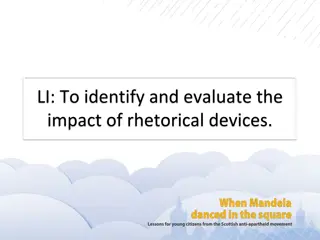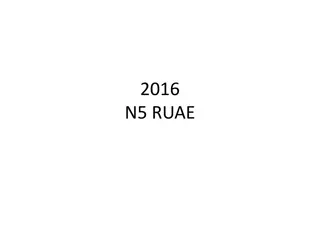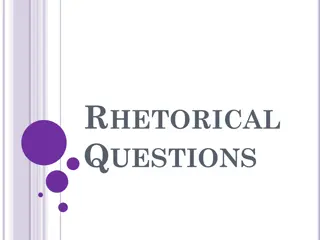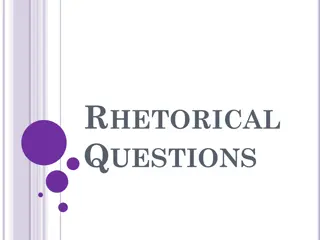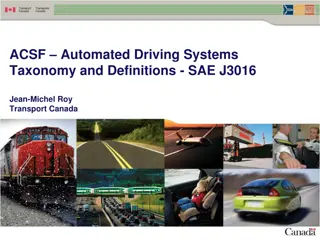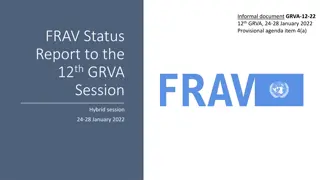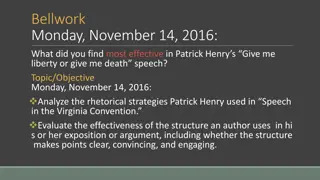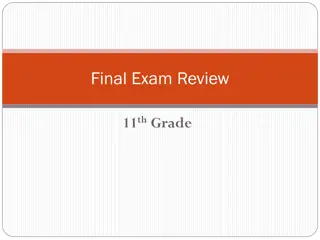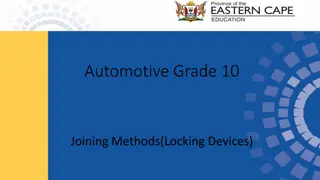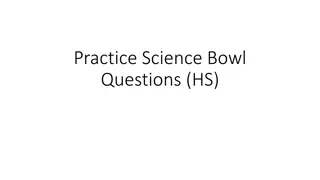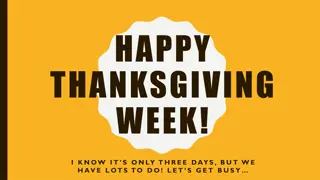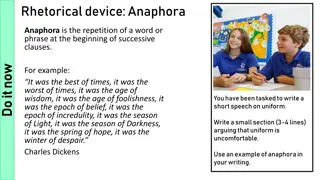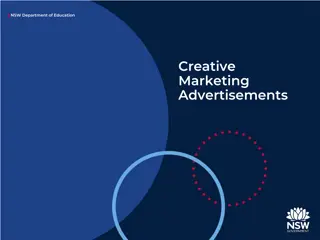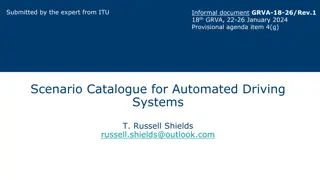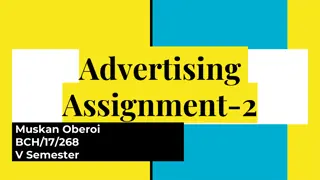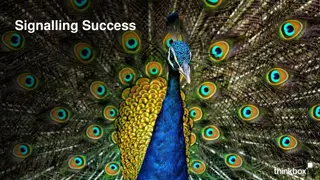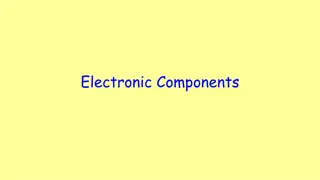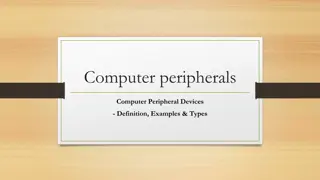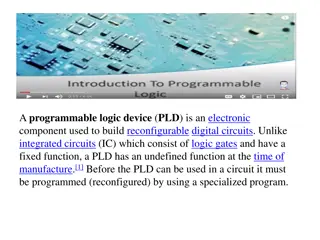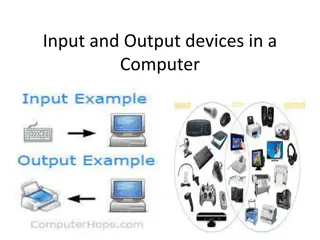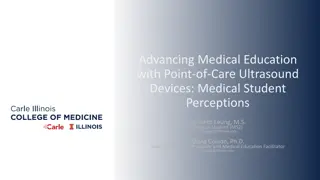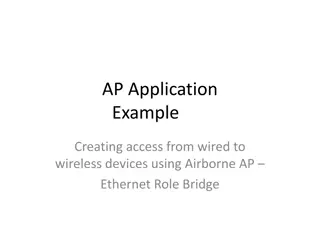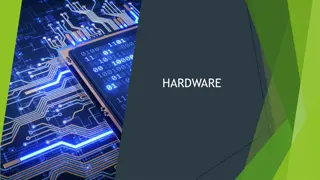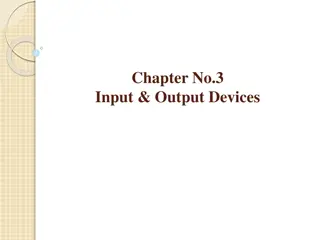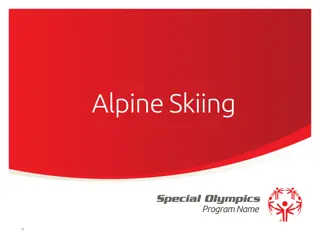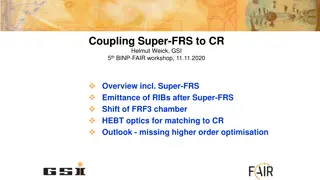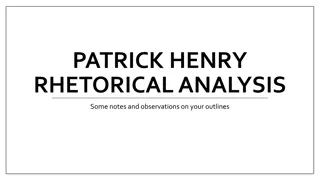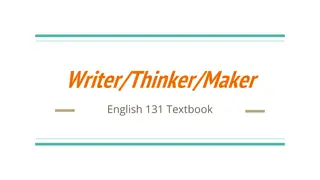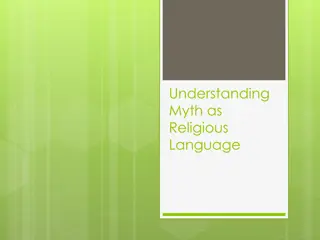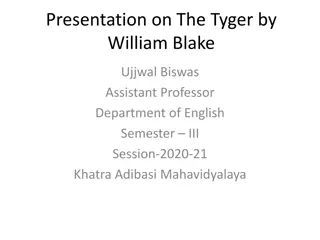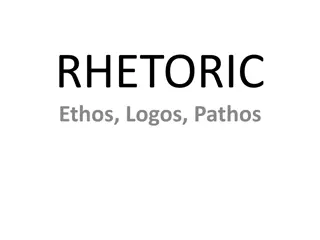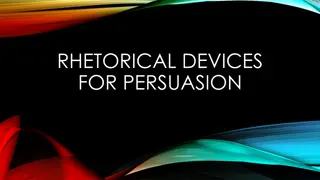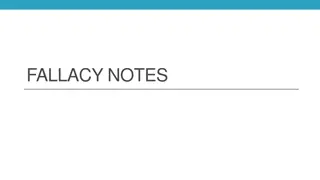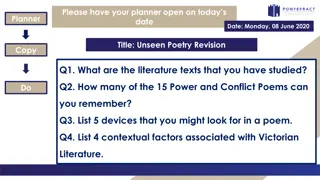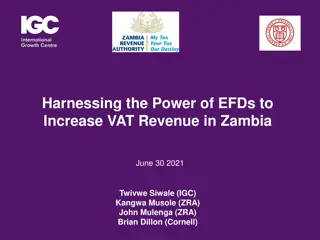Analyzing Rhetorical Devices in Super Bowl Ads
Explore the use of rhetorical devices such as rhetorical questions, emotive language, parallel structures, and more in the context of Super Bowl advertisements. Students will learn to identify and analyze these devices to understand their impact on the effectiveness of advertising messages.
Download Presentation

Please find below an Image/Link to download the presentation.
The content on the website is provided AS IS for your information and personal use only. It may not be sold, licensed, or shared on other websites without obtaining consent from the author. Download presentation by click this link. If you encounter any issues during the download, it is possible that the publisher has removed the file from their server.
E N D
Presentation Transcript
The Week of Feb. 3rd-Feb.7th
Rhetorical Devices February 3, 2020
Today at a Glance Make sure you placed your phone in your respective pocket Grab a Growing Roots Paper Root of the Week: Log Rhetorical Devices Notes Super Bowl Ad Activity Exit Ticket Looking Ahead Homework and Important Dates Family Meeting Dismissal
Standard 11-12.RI.6 Determine an author s point of view or purpose in a text in which the rhetoric is particularly effective, analyzing how style and content contribute to the effectiveness of the text.
Todays Objective Students will be able to.... Identify various rhetorical devices used in a Super Bowl Ad and explain how these rhetorical devices impact the effectiveness of the advertisement.
Rhetorical Question A rhetorical question is asked just for effect, or to lay emphasis on some point being discussed, when no real answer is expected. A rhetorical question may have an obvious answer, but the questioner asks it to lay emphasis to the point. In literature, the writers will ask a rhetorical question and then answer the question to have a desired effect. Ex: You re not seriously about to do that, are you?
Emotive Language Emotive language pertains to word choice. Specific diction is used to evoke emotion in the reader. Different words can be used to cause different reactions in the audience. How do the words make you feel? Example: Another person in the bar was injured by the man's glass. VS. An innocent bystander suffered facial injuries when the thug launched his glass across the bar.
Parallel Structures (Parallelism) Parallelism is the use of components in a sentence that are grammatically the same; or similar in their construction, sound, meaning, or meter. This method adds balance and rhythm to sentences, giving ideas a smoother flow and thus persuasiveness, because of the repetition it employs. Examples Like father, like son. He came, he saw, and he conquered. Dr. Martin Luther King s I Have a Dream Speech
Sounds Patterns (Alliteration) Alliteration is a number of words, having the same first consonant sound, occur close together in a series. In Poetry and Prose It creates a musical effect in the text that enhances the pleasure of reading a literary piece. As well as making it easier to memorize. Ex: "So we beat on, boats against the current, borne back ceaselessly into the past." The Great Gatsby, F. Scott Fitzgerald In the Marketing Industry Alliteration makes the brand names interesting and easier to remember. Ex: Dunkin Donuts, PayPal, Best Buy, etc.
Contrast Contrast is a rhetorical device through which writers identify differences between two subjects, places, persons, things, or ideas. The main purpose of contrast is to elucidate ideas and clear their meanings, readers can easily understand through this device what is going to happen next. Example: Unlike most babies, Stuart could walk as soon as he was born. Stuart Little by E. B. White
Description and Imagery Imagery means to use figurative language to represent objects, actions, and ideas in such a way that it appeals to our physical senses. Using metaphors, similes, personification The function of imagery in literature is to generate a vibrant and graphic presentation of a scene that appeals to as many of the reader s senses as possible. Example The starry night sky looked so beautiful that it begged him to linger, but he reluctantly left for home.
The rule of three A series of three words, phrases or sentences that are parallel in structure, length and/or rhythm. The first two elements get the audience thinking you are going in one direction, but the third element introduces an unexpected twist. Examples Veni, vidi, vici. - Julius Caesar Tell me and I forget. Teach me and I remember. Involve me and I learn. - Benjamin Franklin
Repetition Repetition is a literary device that repeats the same words or phrases a few times to make an idea clearer and more memorable. It could be a word, a phrase, or a full sentence, or a poetical line repeated to emphasize its significance in the entire text. Example O Captain! my Captain! rise up and hear the bells; Rise up for you the flag is flung for you the bugle trills O Captain! My Captain! By Walt Whitman
Hyperbole A figure of speech that employs exaggeration in order to make the actual meaning of the moment clearer. A Hyperbole is an unreal exaggeration to emphasize the real situation. Example While we await your decision, the whole school holds it breath.
Anecdote Anecdote is defined as a short and interesting story, or an amusing event, often proposed to support or demonstrate some point, and to make the audience laugh. Example Oh, I would never dream of assuming I know all Hogwarts' secrets, Igor. Only this morning, for instance, I took a wrong turn on the way to the bathroom and found myself in a beautifully proportioned room I had never seen before, containing a really rather magnificent collection of chamber pots. When I went back to investigate more closely, I discovered that the room had vanished. - Dumbledore to a visiting headmaster in Harry Potter and the Goblet of Fire by J.K. Rowling
Super Bowl Ad Activity 1. Take out a piece of paper and fold it horizontally. 2. Draw a line down the fold of the paper 3. While we are watching the Super Bowl Ads you will be writing down the different Rhetorical Devices that are used a. One side will be for one ad the other side will be for the other b. MAKE SURE TO LABEL EACH SIDE WITH THE TITLE OF THE AD!!! 4. After watching the videos we will have a class discussion over the videos.
Class Discussion What were some of the similarities and differences between the two advertisements? Which ad in your opinion was the most effective and why? Are there certain types of rhetorical devices that advertisers have the tendency to use more than others? If so, which ones?
Exit Ticket On the back of your Superbowl activity paper answer the following question In your opinion, what is the most effective rhetorical device and why? Once you are done turn in your paper to the basket, you may grab your phone and pack-up.
Looking Ahead Tomorrow I will be having my observation, please be on your best behavior. I am being graded on this!Thanks :) Growing Roots is due on Friday Make sure you are working on your BGB Project Your Presentation is due FEB 28TH!!!! If you need help please talk to with Mrs. Burge or myself
Connotation/Denotation February 4th, 2020
Today at a Glance Make sure that your phone is in your designated pocket If you have late work come talk to me after class to turn it in. Connotation/Denotation Notes Connotation/Denotation Activity Exit Ticket Looking Forward Homework and Upcoming Due Dates Dismissal
Standard 11-12.RI.4 Determine the meaning of words and phrases as they are used in a text, including figurative, connotative, and technical meanings; analyze how an author uses and refines the meaning of a key term or terms over the course of a text.
Todays Objective SWBAT Interpret connotative meanings of words to analyze the author s purpose in Alan Lightman s A Modest Proposal .
Denotation Denotation = the actual, literal dictionary definition of a word. The definition of the word does not derive solely from the context in which it is used though you can look at the context of how it has been used to figure out the definition of the word.
Connotation Connotation = the thought, feeling, or idea that is invoked by the word This definition comes almost entirely from the context in which it is used. Words typically have one of three specific connotations to it: Positive, Negative, and Neutral.
Positive, Negative, & Neutral Connotation Neutral Connotation: Words that do not elicit positive or negative thoughts they can be influenced based specifically on how they are used in a sentence, but typically have no specific mood or tone to it. Positive Connotation: Words that illicit a generally happier/good or positive thought. Negative Connotation: Words that illicit a generally bad or negative thought. Ex: Fragrance (+) vs. Odor (-) vs. Smell (n)
Practice (P)________________ > Shy < __________________(N) (P)________________ > Happy < __________________(N) (P)________________ > Old < __________________(N) (P)________________ > Confident < __________________(N) (P)________________ > Different < __________________(N)
Connotation/Denotation Activity On a separate piece of paper, you will be writing the connotative and denotative meanings of the underlined/Bolded words in an excerpt from Lightman s A Modest Proposal . Denotation: Write down the dictionary definition of the words Connotation: Write down a positive or negative connotation of the word, as well as a neutral connotation of the word. When you are done read through the excerpt again with the neutral connotations of the words, discuss with your partner how the impact of the excerpt has changed. Be prepared for a class discussion!!! Write down your thoughts on your paper.
Exit Ticket On the back of your paper respond to the following question How do the connotative and denotative meanings of words affect an author s purpose? When you are done, turn your paper into the basket, and you may grab your phone and pack up.
Looking Ahead Tomorrow we will introduce and begin working on the PSA Project/Presentation Growing Roots is due on Friday Make sure you are working on your BGB Project Your Presentation is due FEB 28TH!!!! If you need help please talk to with Mrs. Burge or myself
PSA Project February 5th, 2020
Today at a Glance Make sure that your phone is in your designated pocket If you have late work come talk to me after class to turn it in. PSA Project Introduction Start working on PSA Projects Looking Ahead Homework and Important Dates Dismissal
Standard 11-12.SL.4 Present information, findings, and supporting evidence in an organized, developed style appropriate to purpose, audience, and task, allowing listeners to follow the speaker's line of reasoning, message, and any alternative perspectives.
Objective Students will be able to.... Work in groups to create a PSA using elements of satire and rhetorical devices.
What is due by the end of the hour? As a group you will need you agree upon a topic and have it be approved my Mrs. Burge and/or Myself. Once your topic is approved you will be completing an Outline for your paper Problem, Solution, Slogan/Pitch, Satirical Elements, Rhetorical Devices, and Ethos/Pathos/Logos You will be dividing the work amongst yourselves The Outline is due at the end of the hour.
Looking ahead Your groups will continue to work on the PSA Project Growing Roots is due on Friday Make sure you are working on your BGB Project Your Presentation is due FEB 28TH!!!! If you need help please talk to with Mrs. Burge or myself
PSA Project Continued February 6th, 2020
Today at a Glance PSA Project Check-in Continue working on PSA Project in your groups Exit Ticket Looking Forward Homework and Upcoming Due Dates Dismissal
Standard 11-12.SL.4 Present information, findings, and supporting evidence in an organized, developed style appropriate to purpose, audience, and task, allowing listeners to follow the speaker's line of reasoning, message, and any alternative perspectives.
Objective Students will be able to.... Continue to practice and work in groups to create a PSA using elements of satire and rhetorical devices that will be presented to the class.


